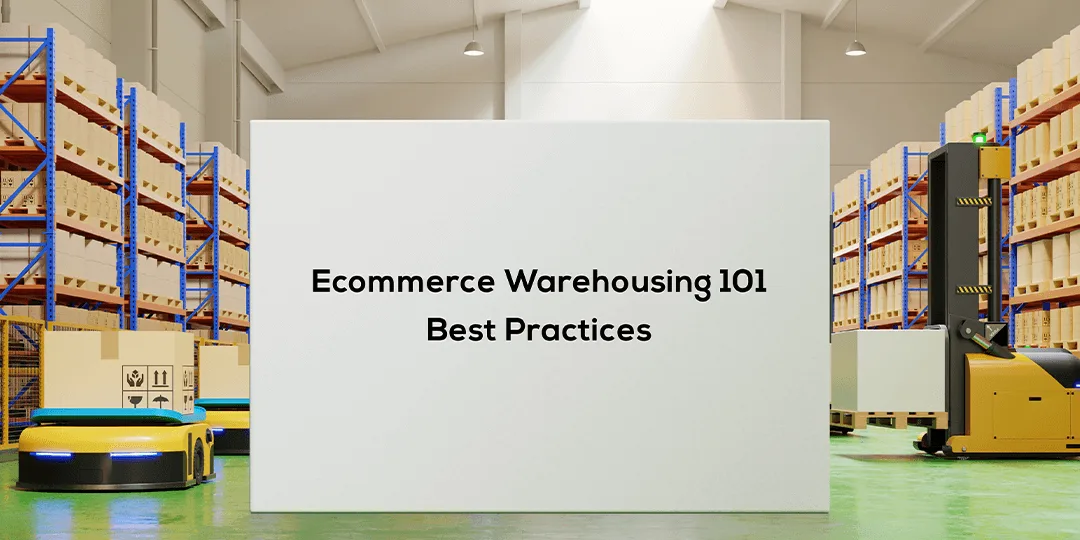The eCommerce industry is growing by 23% year on year, opening up opportunities for entrepreneurs to start and grow their business selling products they love. To sell products successfully, eCommerce sellers need to use excellent warehousing services.
So, how can you optimize warehousing practices for your eCommerce business? Keep reading to learn about the best practices with eCommerce warehousing and how you can ensure you are making the most out of your warehousing for better shipping and more efficient management.
Why Use eCommerce Warehousing?
To understand how you can implement the best practices for eCommerce warehousing, you need first to understand why eCommerce warehousing is necessary. Some of the significant challenges you would face without warehousing include:
- Losing inventory – if you do not have an efficient warehouse management system, you could lose track of your products resulting in losses for your eCommerce business.
- Shipping incorrect items – if you do not have an effective warehousing strategy, you may ship the wrong products to customers. This could cause you to miss out on return customers, and you may receive negative reviews.
- You may run out of storage – if you are storing your products on your property for your eCommerce business, you may run out of storage space as your business grows. This is why you should invest in warehousing services.
- Overselling or underselling – having an eCommerce warehousing strategy helps you plan your stock decisions more effectively in line with your sales figures.
When you implement an effective eCommerce warehousing strategy, you can ensure that your business does not run into these issues that can cause negative reviews, loss of customers, and financial losses.
Benefits of Implementing Effective Warehousing
Some of the benefits to implementing effective warehousing include:
- Faster shipping – outsourcing and automating your packing and warehousing, you can store your products in multiple locations closer to your customers. Fast shipping is one of the consumers’ top priorities when shopping online, so fast shipping will gear your business towards success.
- Less stress – when you’re storing, packing and shipping your products yourself, this can add to your already lengthy list of responsibilities. Delegating these tasks will free up your time, allowing you to focus on growing your business and making your eCommerce store more competitive.
- Accuracy and organization – warehousing your products will allow you to increase the accuracy and organization of your stock decisions.
The benefits of improving your warehousing are immense, and you should consider implementing some of the best practices for warehousing listed in this guide.
Best Practices For eCommerce Warehousing
Here’s a guide to some of the best practices for eCommerce warehousing. Consider how you can factor these practices into your warehousing choices to improve your shipping and warehousing processes.
Select The Right eCommerce Warehousing For Your Business
There are several types of warehousing methods for eCommerce businesses, including:
- Home warehousing – this type of warehousing is the least costly but will add to your responsibilities. There are limits on space and shipping speed with home warehousing.
- 3PL fulfillment centers – this is an advanced form of warehouse that is designed to store, pack, ship, and receive inventory. The technology used at 3PL fulfillment centers makes them a top choice for eCommerce sellers.
- On-demand warehousing – this type of warehousing involves hiring a space for the storage of products. This type of warehousing is optimal for seasonal sales.
- Dropshipping warehouses – the dropshipping warehousing method involves the manufacturer handling the entire supply chain management. The merchant never deals with the inventory. The transit time in dropshipping is generally longer as it is mostly handled overseas. The merchant does not have as much control over their inventory with this method.
Carefully consider your business’s needs, your budget, and which type of warehousing would be the best fit. To choose the best warehouse for your business, think about the kinds of products you sell, the amount of space you require, your budget, the warehouse’s shipping options, and whether you can integrate their warehouse management system with your eCommerce tools.
For those aiming to truly optimize e-commerce warehouse efficiency, delving into specialized strategies to improve space utilization and streamline workflows can make a substantial difference in your overall success.
Inventory Management Systems
Inventory management involves the implementation of RFID scanners to ensure your products are easier to keep track of. You can ensure you don’t oversell or undersell your products with inventory management software. Inventory management software removes the potential for human error with manual inventory management.
Manufacturing Management Systems
Manufacturing software can help you improve productivity and efficiency at the production level for your products. Manufacturing software can help you to automate the following processes:
- Production planning
- Stock availability tracking
- Allocation of resources
- Delegating tasks to production routing
Manufacturing software can help you to accelerate the production process and allows you to manage manufacturing effectively across multiple locations. Manufacturing software is a powerful tool that can help to automate manufacturing processes to improve speed and efficiency.
Good Warehousing Practices
Establishing the best warehousing practices for your eCommerce business helps establish a good management strategy and better shipping for your customers. Some of the methods you can implement in your warehousing strategy include:
- Using a cloud-based warehouse management and access control system for security that integrates with other eCommerce and warehouse tools to streamline operations.
- Reducing shipping costs with inventory distribution.
- Maintaining an intimate understanding of customer demand.
- Having an efficient product return system.
Summary
Warehousing is one of the pivotal factors in ensuring your business provides excellent service for your customers. Handling warehousing yourself can be highly time-consuming and will no longer be viable as your company grows.
By utilizing tools and software that can optimize your warehousing practices, you can remove the margin for error in your stock decisions. Smarter warehousing practices will help you improve your business’s overall performance.






Thank you for saying that not having a good warehouse management system could cause you to lose track of your inventory and cause losses for your online store. My sister started an online store. I’ll advise her to seek out assistance from a warehouse management software specialist so that the track is always updated.
Thank you for sharing this article. This is especially true for business owners whose hands are already full.
I can’t wait for more articles from you!